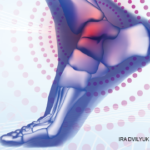“I had a patient who did not think that a walking boot fit the image of a lawyer he wanted to project in the courtroom,” says Dr. Rao. “This is why the decisions on orthotic use have to be collaborative. There is no point in investing up to $400 in these devices if the patient isn’t going to wear it.”
Anybody with knee or foot arthritis can potentially benefit from the use of orthoses. Those where there is still some residual flexibility in the joint may have the best response.
“If a clinician can move a joint at least a little bit, that suggests that the joint can still be realigned with the help of a device,” says Dr. Hillstrom. “If somebody’s knee or foot is literally stiff, frozen like the Tin Man from the Wizard of Oz, then they might not be a good candidate. The orthotics need to be able to nudge the joint into an improved position of alignment.”
“In those who have an immobile foot, a device might actually cause an increase in load to their joints,” says Dr. Nolan. “Whatever joint problems they have already could be exacerbated.”
Orthotics is a part of our armamentarium and can address pain as well as its root causes.
—Howard Hillstrom, PhD
Assess Response
Rheumatologists should assess their patient’s response to the orthotic at every visit. In addition to an assessment of joint mobility and tenderness, ask about what causes them pain and if there have been any changes since the last visit.
There are a number of scales available. The Western Ontario and McMaster Universities Arthritis Index (WOMAC) measures five items for pain, two for stiffness, and 17 for functional limitation and is one of the more widely used measuring tools. The Knee injury and Osteoarthritis Outcome Score (KOOS) looks at pain, other symptoms, functioning in activities of daily living, function in sports and recreation, and knee-related quality of life.
The experts interviewed here emphasized that, when possible, it is best to talk about pain after the knees and feet have been stressed. Ask the patient to do something specific, such as walking up and down a half flight of steps first.
“Have them perturb the system by doing a task and then immediately afterward ask them about their pain intensity,” says Dr. Hillstrom. “There is not a lot of pain involved with watching football on the couch. What is much more interesting is if they complain about their knee killing them following dancing for two hours at someone’s wedding.”

